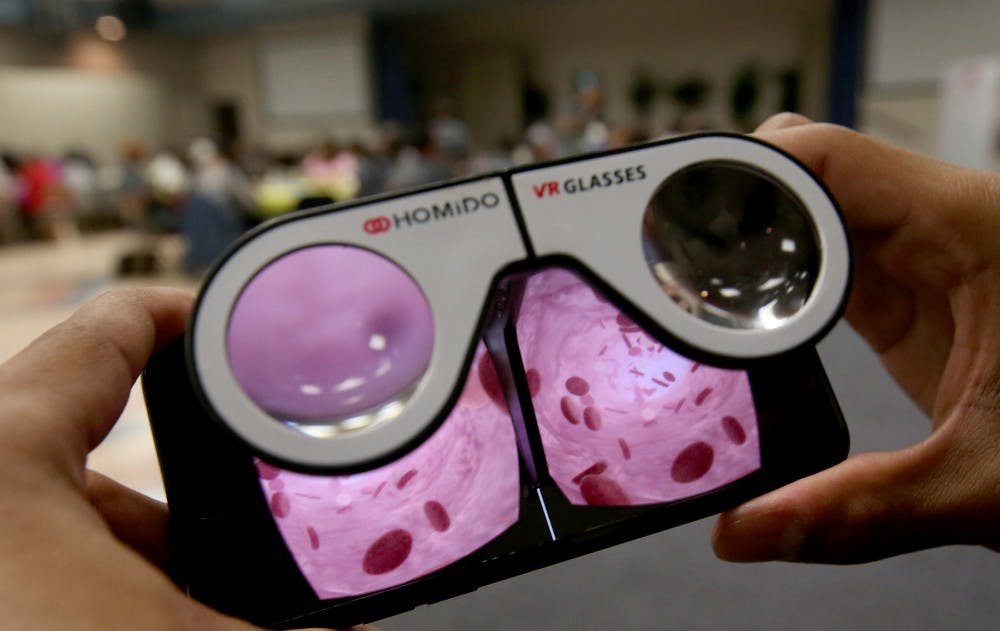Virtual reality headsets are making their way into USC classrooms.
A virtual reality boot camp is set for the end of June to introduce the tool to professors and students, showing them videos of virtual and augmented reality. Director of Enterprise Academic Technology Initiatives Linda Mihalik was inspired to bring the technology to USC by a presentation showing students a controlled burn through virtual reality at The New Media Consortium.
“I thought this was a great opportunity for students to experience things they couldn’t normally in the classroom,” she said.
She believes virtual reality would assist students in math courses, biology courses, physics courses and a slew of other courses at USC.
These headsets contain a screen that users can insert their phone into to view a computer simulation of a 3D image or environment.
School of Hotel, Restaurant and Tourism Management professor Brian Mihalik has been gradually incorporating virtual reality into his course by recording tours of the historic sites like the Olympiastadion stadium in Berlin, a bobsled run in Lake Placid, New York, Kruger National Park in South Africa and other locations. He's able to show them to his students using their virtual reality headsets.
For his students it's a chance to experience events that are uncommon, such as experiencing elephants up close and seeing their reactions to a foreign object, like a camera.
“You get to see that herding element that you probably never would see even if you were on a guided tour,” he said. “We take students to places they will never go to, at least in the next four or five years."
Mihalik said that allowing students to experience virtual reality will help them understand what their future job field will look and feel like. He conducted an internal poll and said the responses from his students were positive overall, with over half of students claiming they’re interested in creating their own virtual reality experiences.
“We could nibble at it. So that we could say 'okay look, this is what you’re getting into. This is what a hotel is like, this is what a sporting event is like,'” Mihalik said.
Evan Meaney, School of Visual Art and Design associate professor, has spent the previous two years creating a virtual reality lab in McMaster College.
With virtual reality technology, students can learn three-dimensional and two-dimensional acid development, user experience development, software development and many other skills. Even if students aren’t interested in virtual reality, Meaney said they can still leave his courses with several skills mastered for a portfolio.
“I want them to have as many tools in their tool kit as they can to say what they want to say to the world,” Meaney said.
Meaney has had students go onto gaming studios such as Blizzard Entertainment and Electronic Arts. He wants to see virtual reality expanded across campus, but only where it makes sense.
“I hope they’re considering why and not just like, ‘oh, it’s a cool thing’, because a lot of times things can be done cheaper, they can be done more effectively, they can get out to more people if they’re not VR,” Meaney said.
Director of the School of Visual Art and Design Laura Kissel introduces her advanced documentary production students to virtual reality. For the past three years, she has shown her students a handful of short virtual reality documentaries.
“I’m just trying to let my students know that this is something that the media industries are starting to embrace,” Kissel said.
Kissel said there are many possible ways to apply virtual reality to a classroom. For example, virtual reality has the potential to benefit students interested in the medical field.
“If they can put on a VR headset and be able to, I don’t know, walk through or navigate some operations procedure or trauma procedure," Kissel said. "It may or may not be a useful tool for them and a lot of that depends upon the type of story that they're trying to tell."

